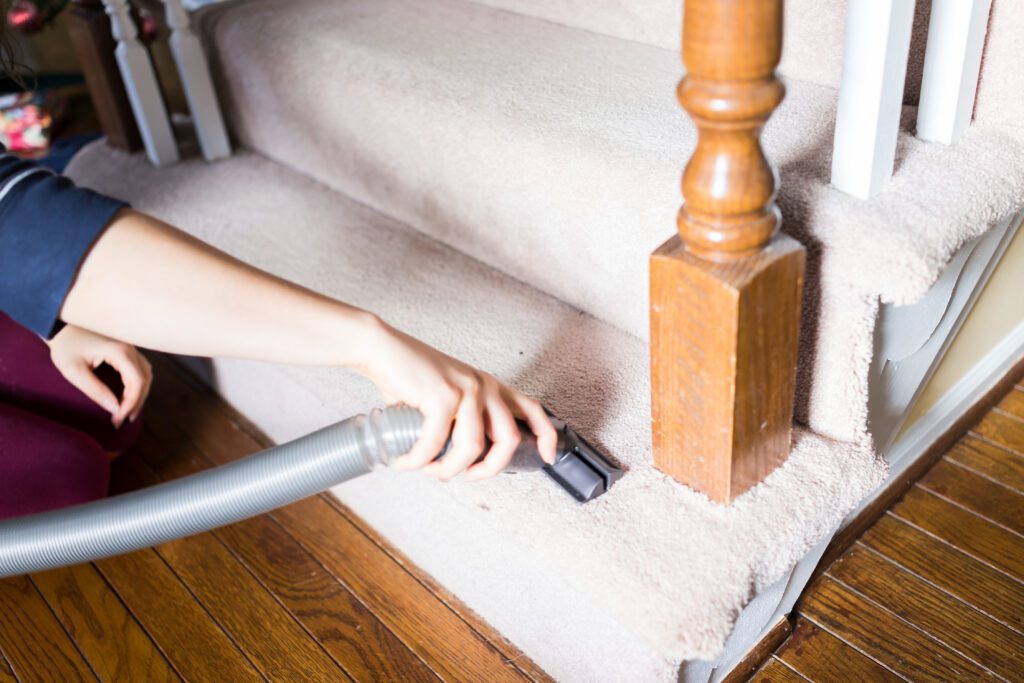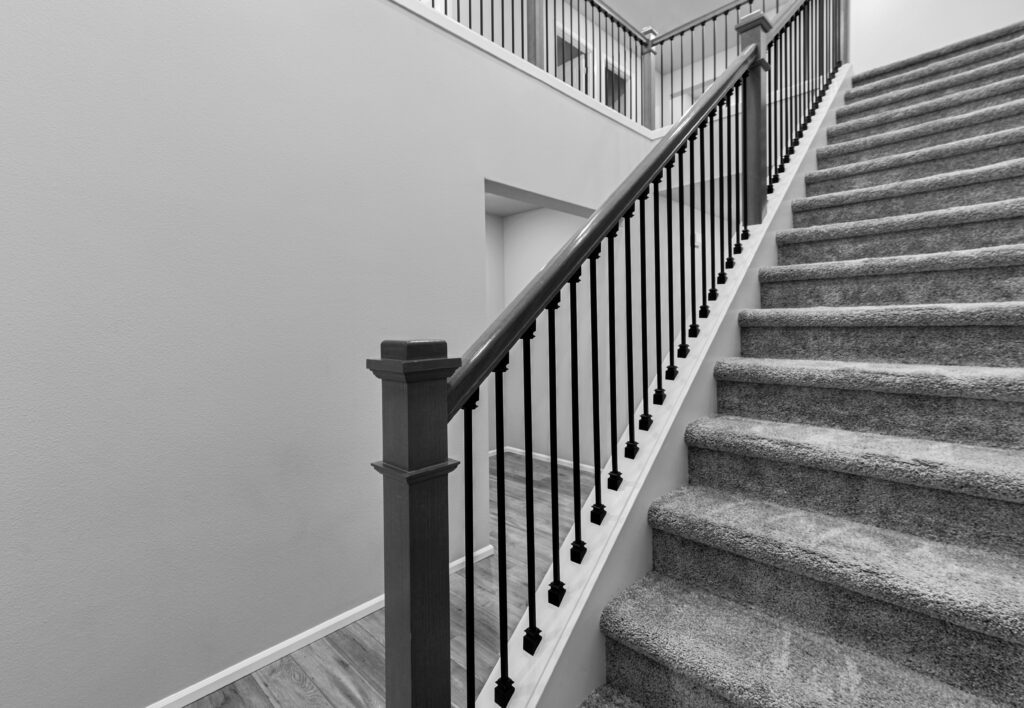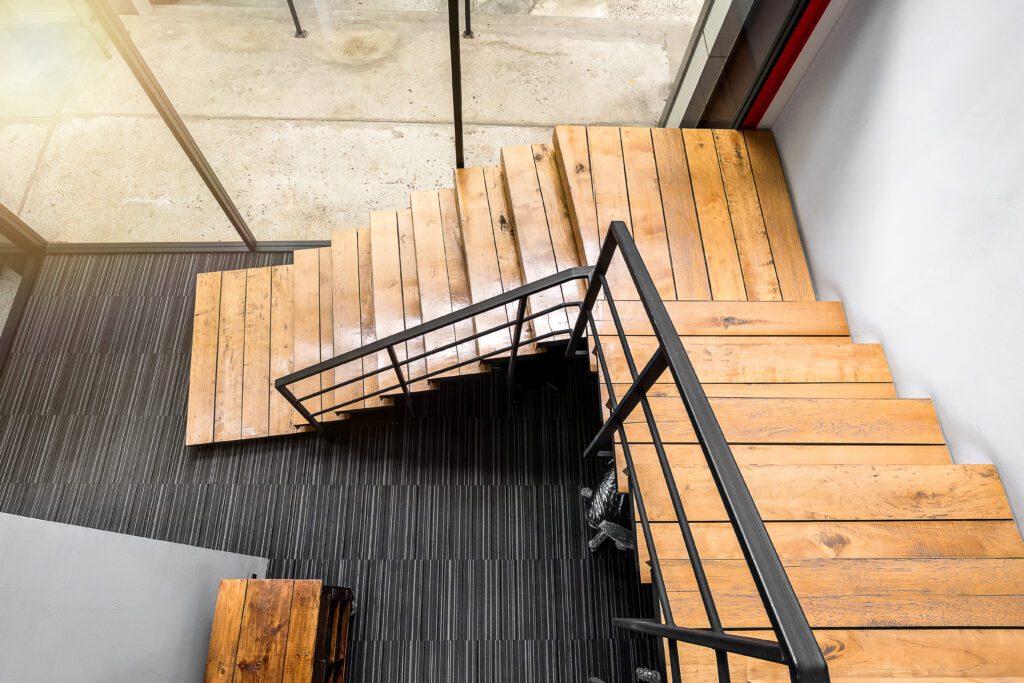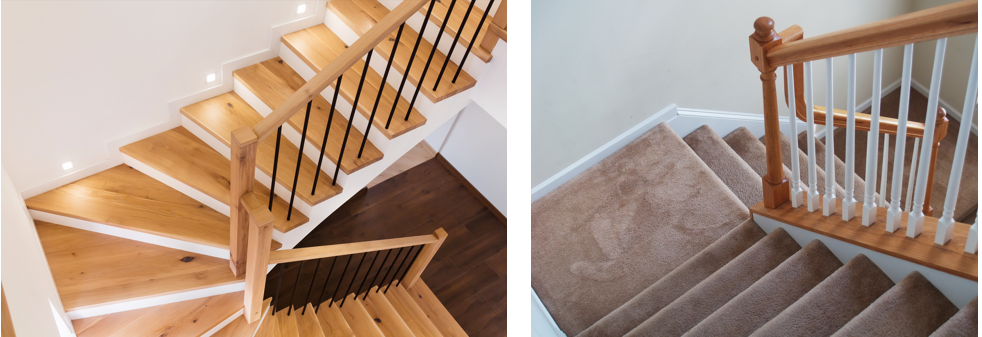When renovating or building a home, one of the most important decisions homeowners face is choosing between carpeted vs wood stairs. This choice is not just about aesthetics; it encompasses safety, maintenance, cost, and long-term value. Drawing insights from various sources, this article aims to provide a comprehensive comparison, helping you make an informed decision that aligns with your lifestyle and home design.
Safety Considerations
When it comes to stairs, safety is paramount. Carpeted stairs offer a significant advantage in this regard. They provide better traction and a softer surface, which can be critical in reducing injuries from falls – a concern especially in homes with children or elderly residents. Wood stairs, while elegant, can be slippery, particularly when polished or if there are liquid spills. However, they can be made safer with the addition of anti-slip treads or coatings.
Maintenance and Durability
Maintenance demands vary between carpeted and wood stairs. Wood stairs are easier to clean, requiring only regular sweeping and occasional mopping. They are also more durable and less prone to wear in high-traffic areas. Carpeted stairs, on the other hand, require more frequent cleaning to maintain their appearance and hygiene, especially in households with pets or high foot traffic.

Cost and Longevity
Initial installation costs for wood stairs can be higher than for carpeted stairs, but wood offers better long-term value. Wood stairs can last decades with proper care, while carpeted stairs may need replacement every few years, depending on the quality of the carpet and the level of foot traffic. This makes wood stairs a more cost-effective option in the long run. I’ve broken down these considerations in these 3 tables below for an easy comparison.
Rotate Your Mobile Device For Tables:
Installation Costs:
| Cost Factor | Carpeted Stairs | Wood Stairs |
|---|---|---|
| Initial Material Cost | $3 to $11 per square foot | $100 to $200 per step (varies by wood) |
| Initial Installation | $3 to $6 per square foot | $40 to $75 per hour (8-12 hours total) |
| Total Initial Cost | Approx. $500 to $2,000 (12-15 steps) | Approx. $1,200 to $3,000+ |
Ongoing Maintenance Costs:
| Maintenance Factor | Carpeted Stairs | Wood Stairs |
|---|---|---|
| Cleaning | Regular vacuuming; Professional cleaning $50 to $75/stairs | Regular sweeping and mopping; Minimal cost for cleaning supplies |
| Periodic Replacement/Refinishing | Replacement every 5 to 10 years (Similar cost to initial installation) | Refinishing every 10 to 20 years ($40 to $75 per step) |
Long Term Considerations
| Consideration | Carpeted Stairs | Wood Stairs |
|---|---|---|
| Durability | Less durable, more frequent replacement | More durable, longer lifespan |
| Home Value | Lower impact on home value | Can add significant value to a home |
Aesthetic and Design Flexibility
The aesthetic appeal of stairs plays a significant role in home design. Wood stairs offer a timeless elegance and can be customized with various stains and finishes to match the home’s decor. Carpeted stairs provide a warmer, more inviting look and come in a range of colors and patterns, allowing for greater personalization.


Environmental Impact
For environmentally conscious homeowners, the choice between carpeted and wood stairs also involves considering the materials’ sustainability. Wood is a natural, renewable resource, especially if sourced from certified sustainable forests. Carpets, depending on their materials, can have varying degrees of environmental impact.
Personal Preference and Lifestyle
Ultimately, the choice between carpeted and wood stairs boils down to personal preference and lifestyle. Carpeted stairs might be the go-to option for families seeking comfort and safety, while wood stairs might appeal more to those prioritizing ease of cleaning and a classic look.
Final Thoughts
Deciding between carpeted vs wood stairs involves a careful consideration of safety, maintenance, cost, aesthetics, and environmental impact. By weighing these factors, homeowners can choose an option that not only enhances the beauty of their home but also aligns with their lifestyle and values.
You may also be interested in our post on Homeownership Essentials, Tips all Homeowners should know




